

Paul Maric
This Tesla self-drove me 50km to Bunnings on its own (almost)
7 Days Ago
Kia’s most affordable Stinger proves that a classy large five-door can be had on a budget, if you’re happy to skim on frills and performance.
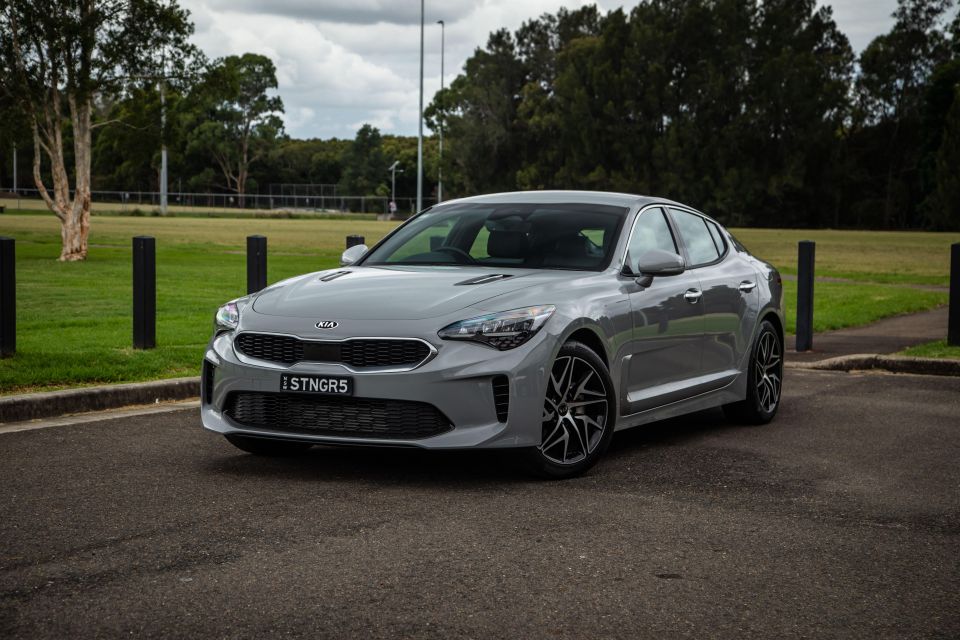
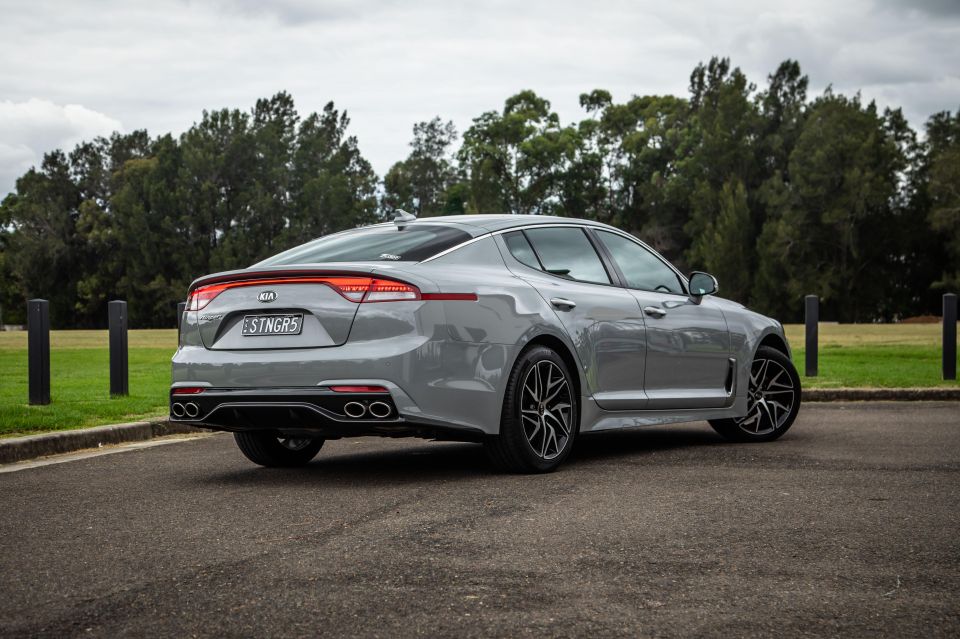

Journalist
New from
$49,550
excl. on-roads

Journalist
New from
$49,550
excl. on-roads


Journalist
New from
$49,550
excl. on-roads

Journalist
New from
$49,550
excl. on-roads
Quickly see how this car stacks up against its competition. Select any benchmark to see more details.
Where expert car reviews meet expert car buying – CarExpert gives you trusted advice, personalised service and real savings on your next new car.
It’s easy to cast Kia’s four-pot turbo Stinger in less than positive light, living in the shadow of its more heroic twin-turbo V6 sibling that itself rocked up to the rear-drive performance sedan party so fashion late that almost everyone else had left.
Thing is, when you come at the 2021 Kia Stinger 200S with a fresh eye and clear perspective, it stacks up as a quite a likeable and classy cruiser that does a nice job of backing up its luxury car aspirations to a fair degree, at a price half that of bread and butter alternatives wearing BMW 5 Series and Mercedes-Benz E-Class badges.
The 2.0-litre liftback mightn’t sit at the bleeding edge of motoring trends, but that doesn’t make it unappealing. And a few choice touch-ups to the 2021 range are sure to boost appeal further, even if pricing has crept higher in the process.
So how does the most affordable Stinger stack up on merit if you’re after a classy grand tourer on a circa-$50,000 budget? And is there enough in the package to dissuade you away from the obvious V6-powered alternative?

The whole 2021 Stinger range has copped a price hike, with the entry 200S rising by $2160 to a new list price of $49,550 plus on-road costs. Drive-away pricing at the time of writing is $53,090.
The up-charge to slip into the V6-powered version in similar ‘S’ trim is $3700 (to $56,890 drive-away). Tempting.
Scaling up to higher-grade, feature-filled GT-Line with 2.0-litre power is $60,690 drive-away, while peak Stinger in the V6-powered GT demands $66,690 drive-away.

The other mainstream-badged large ‘sedan’ with common five-door liftback form is the well-regarded Skoda Superb currently only available in 206TSI Sportline guise ($62,990 drive-away).
The ageing Chrysler 300C Luxury clocks in at $59,950 before on-roads, while the mid-sized and turbocharged Mazda 6 Atenza comes in at $50,090 list.
Arguably the Stinger’s closest rival from Europe balancing size and price is the dimensionally smaller Audi A5 Sportback, which starts at $71,900 list for the entry-level 40 TFSI S line which scores a 140kW 2.0-litre turbo and front-wheel drive.
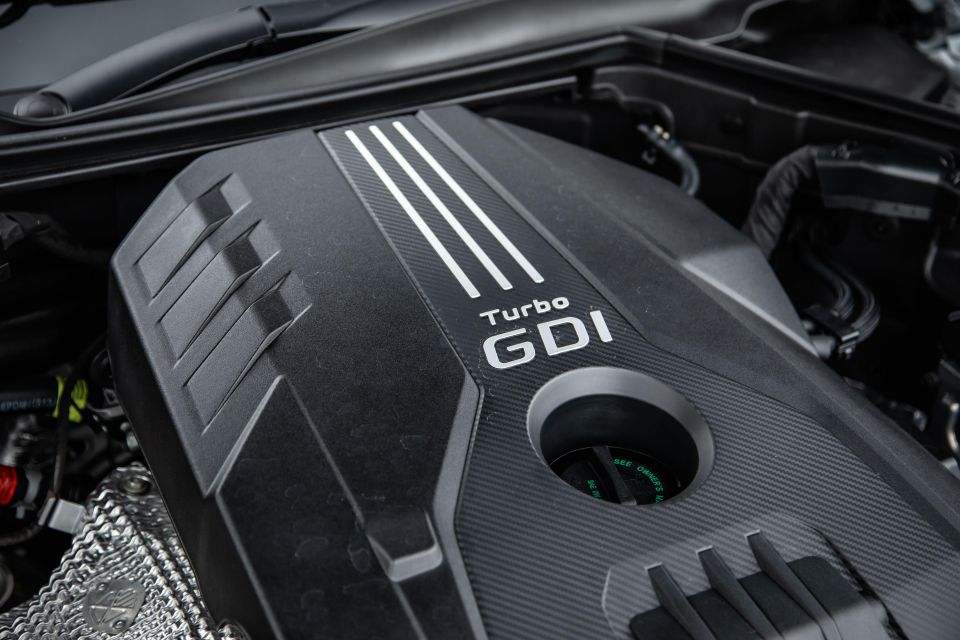
Then there’s the Genesis G70 2.0T ($59,300 list) which will be facelifted shortly. Yes of course, the Korean relative is certifiably mid-sized in measures of length and wheelbase and shorter in both than Stinger, but it’s a logical cross-shop if after a smart sedan and not just maximum cabin length, right?
In fact, whip out the tape measure and the Stinger 200S’s 4830mm length and 2905mm wheelbase straddles the grey area between contemporary medium and large segment sizes – neatly between BMW’s 3 Series (4709mm) and 5 Series (4963mm), for example.
Point? At $49,550 list, the Stinger 200S looks a ‘large’ bargain, if less so judged against a slew of mid-sized alternatives, of which we pored over to fair extent in our review of the GT-Line version here.
It comes in a choice of eight colours, only two of which are considered premium pearl/metallic effect finishes that add an upcharge of $695. Our test car’s putty-look Ceramic Silver metallic, for instance, adds no cost.
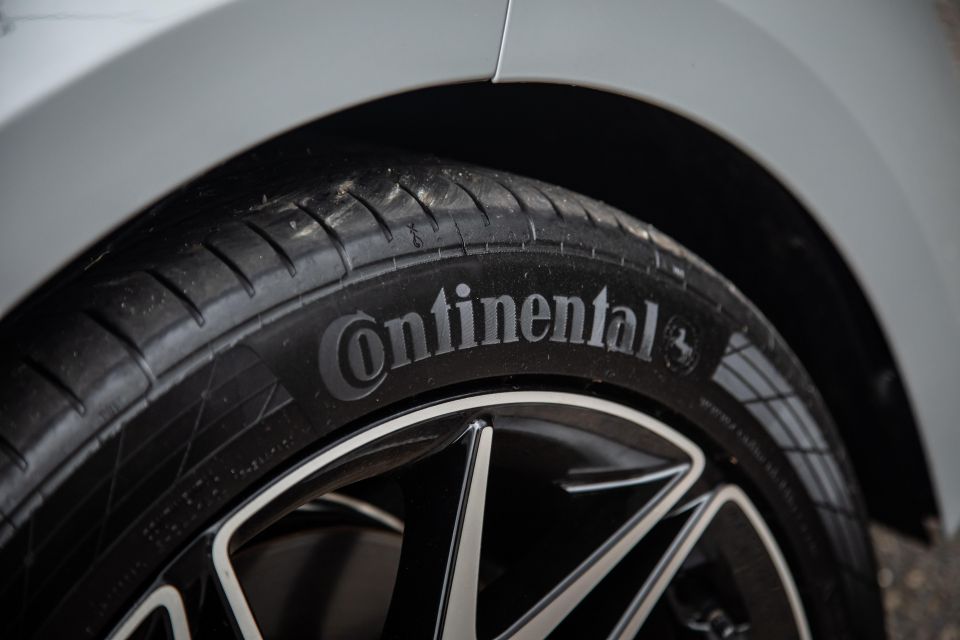
When it comes to standard-fit equipment, the 200S comes out swinging in plenty of nice areas.
It gets new-for-2021 LED headlights with dusk-sensing, LED daytime running lights and tail lights, new-style 18-inch alloys with 225mm Continental ContiSportContact 5 tyres, rear parking sensors, rain-sensing wipers, power-folding and heated mirrors, puddle lamps, satin silver bright work and quad exhaust outlets. Cruise control is adaptive, too.
Inside, the 200S has keyless entry and go, an eight-way powered driver seat, paddle-shifters, a 4.2-inch colour driver’s screen, an auto-dimming frameless rear-view mirror, synthetic leather, dual-zone climate with rear vents and temperature control, as well as LED cabin and boot lighting, three USB-A ports and two 12-volt outlets.
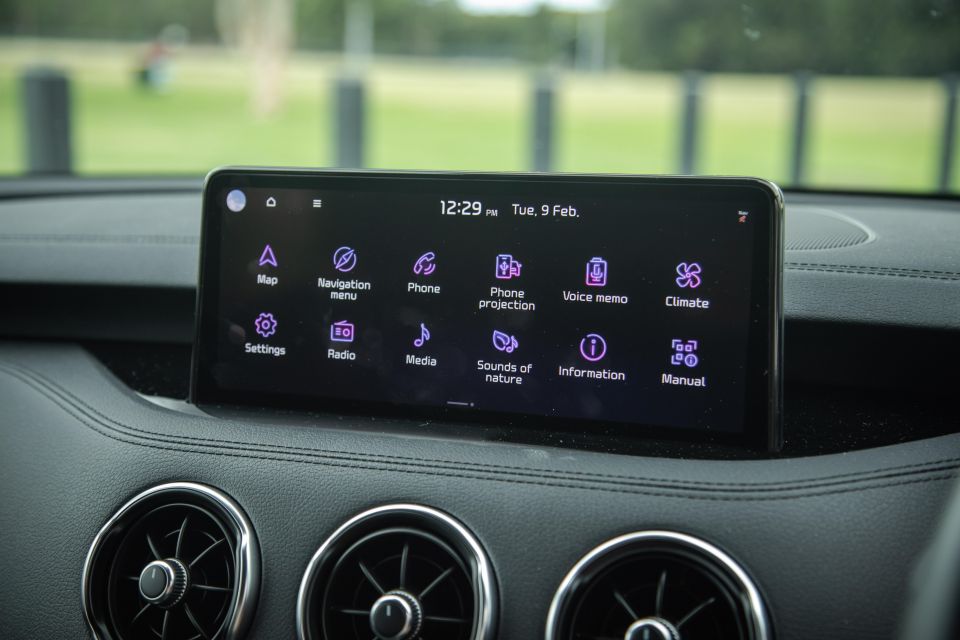
The key 2021 upgrade is the new 10.25-inch touchscreen infotainment system, replacing the old 200S-spec 7.0-inch unit. It features wired Apple CarPlay and Android Auto, proprietary sat-nav, DAB+ radio, voice control, six-speaker audio and Bluetooth capable of connecting to multiple phones at once.
Sure, the 200S lacks some bells and whistles of the GT-Line, but the features suite is well-rounded. Inductive charging and front parking sensors would be nice, but that’s nitpicking.
In fact, if you live without the staggered-width 19-inch wheels offered further up the Stinger tree, that $7680 premium charge for the GT-Line starts to look a mite excessive.

The 2021 range carries over the Stinger’s five-star ANCAP assessment from 2017.
At the time it scored 91 per cent for adult occupant protection, 81 per cent for child occupant protection, 78 per cent for pedestrian protection and 70 per cent for safety assist.
The caveat here is that, for 2021, there are new inclusions to Stinger’s safety suite.
The all-speed autonomous emergency braking now features pedestrian and cyclist detection with junction assist, and the lane-keeping system has been augmented with road edge detection and a lane-following (centring) function.
Thing is, the Stinger range splits variants between haves (GT and GT-Line) and have-nots (200S and 300S) when it comes to further features. What the base models miss out on are blind-spot monitoring, the camera-based in-dash blind-spot view monitor system, rear-cross traffic alert with auto reverse braking and safe exit warning to prevent opening your door into rear-approaching traffic.
That said, the 200S fits a full compliment of seven airbags, with front, front-side, curtain and driver’s knee bag coverage. Other features include forward collision warning, an active bonnet and rear occupant alert.
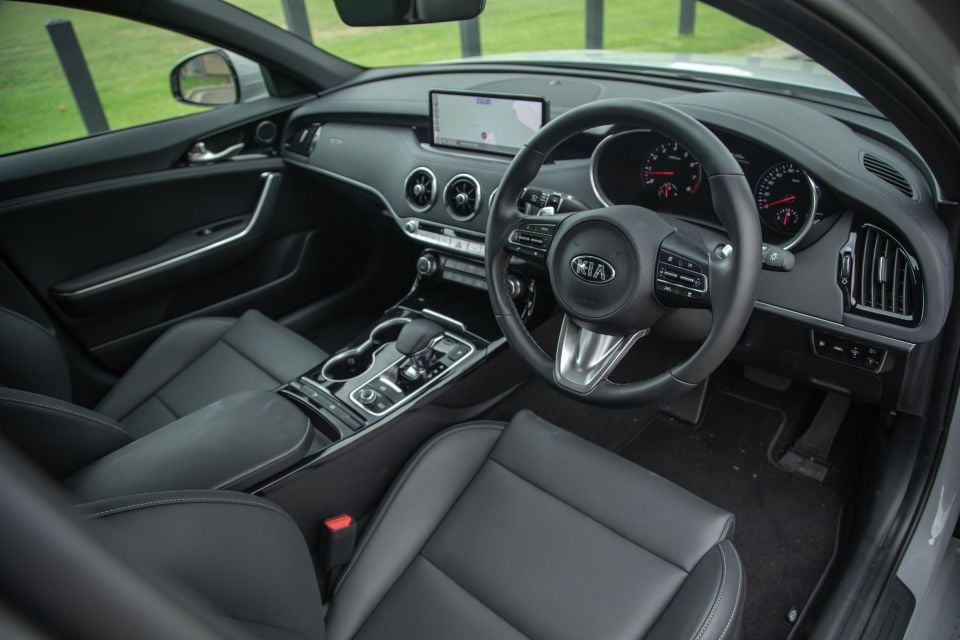
As nice as the GT-Line’s ornately stitched door trims, fancy 360-degree camera system and mood lighting are, there’s nothing low-rent about the 200S’s neat, subtly upmarket and slightly less pretentious cabin space.
In fact, the base model’s comfy seats seem lightly softer and nicer, and the lack of bolster adjustment is superfluous with contours this pleasing. Further, the faux leather trim is a shade or two suppler than the real stuff in high-spec variant. Go figure.
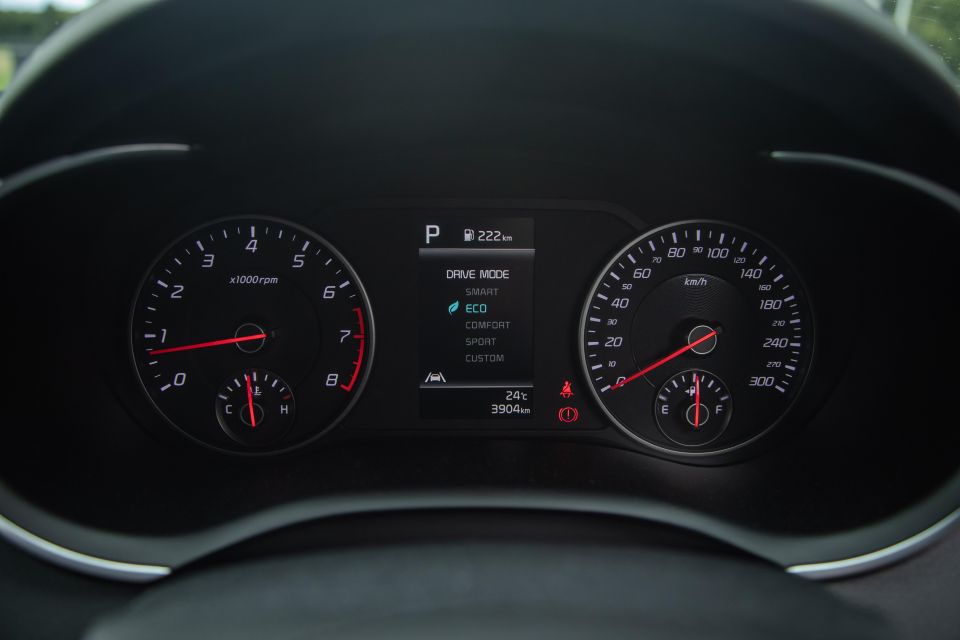
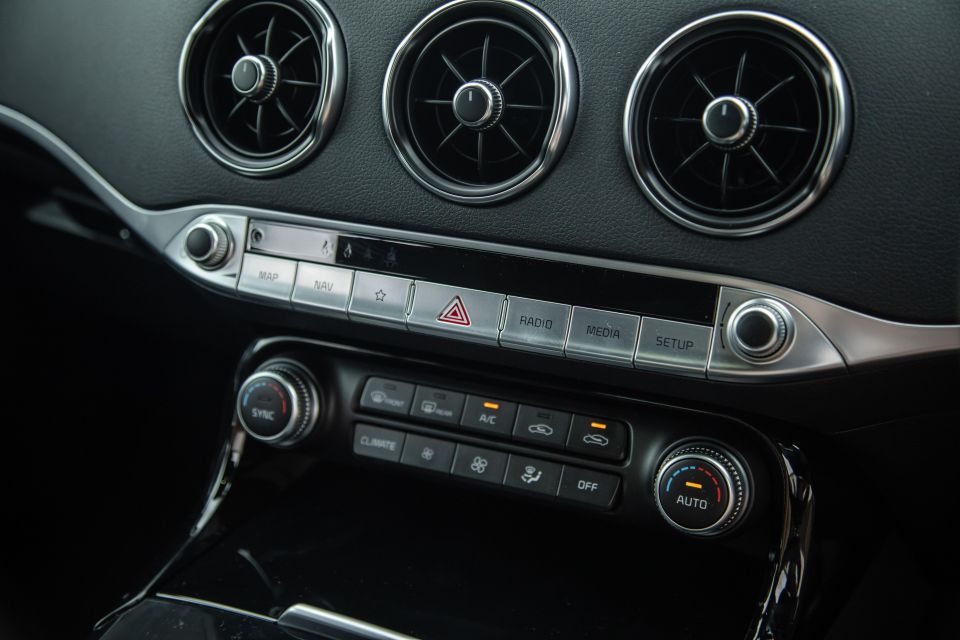
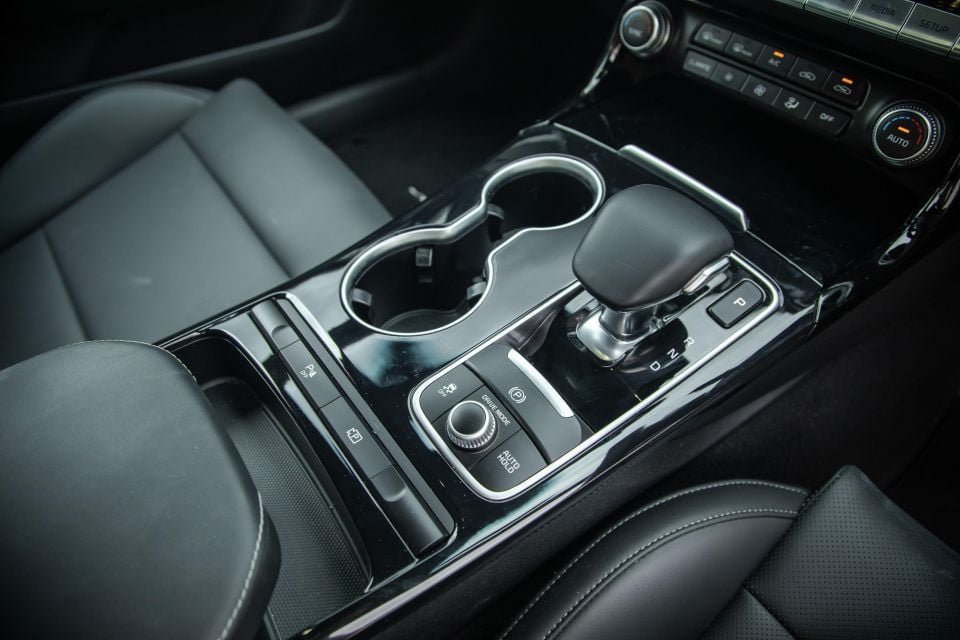
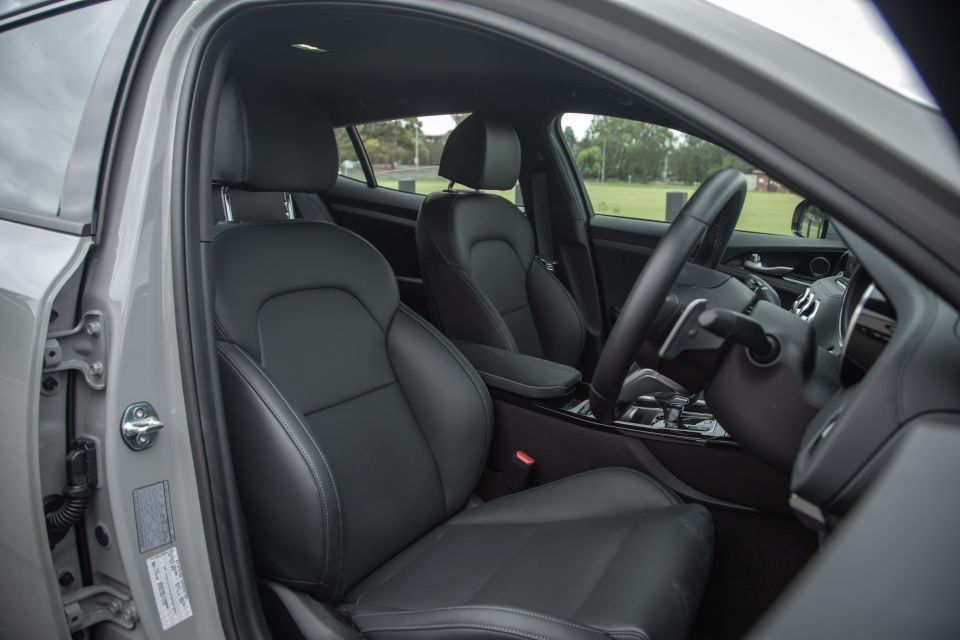
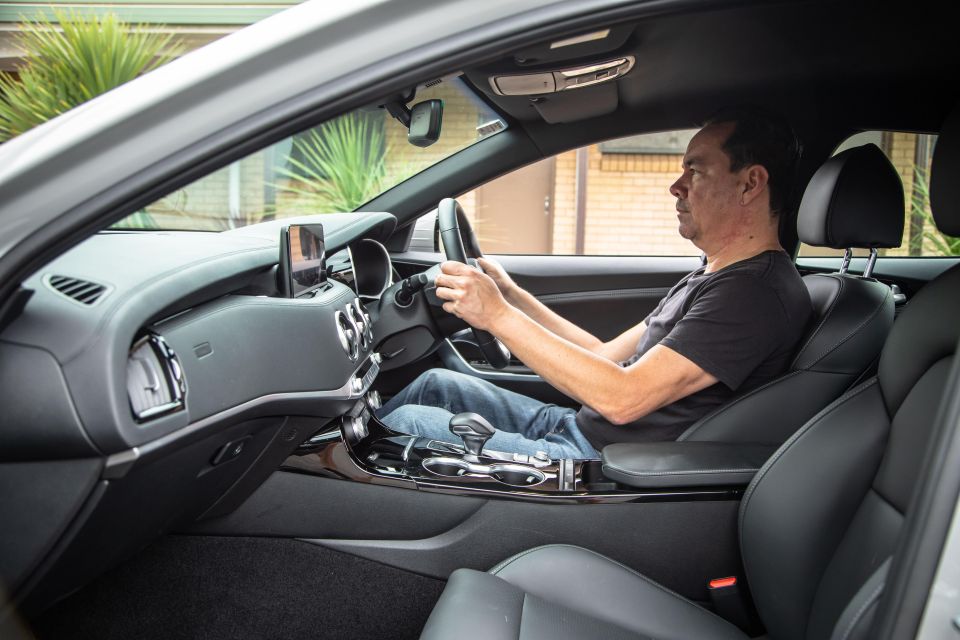
There really is little news inside but not much was broken nor requiring much fixing. The new 10.25-inch touchscreen brings a key lift in ambience to what remains a classy, pleasingly straightforward and unfussy design.
That it’s not inferior, smaller or lacking in content – 360-degree camera viewing notwithstanding – to higher-grade Stingers really boosts 200S’s upmarket aspirations and the round-bottom wheel and lack of inductive phone cradle are realistically small concessions you barely notice as economical fit-out.
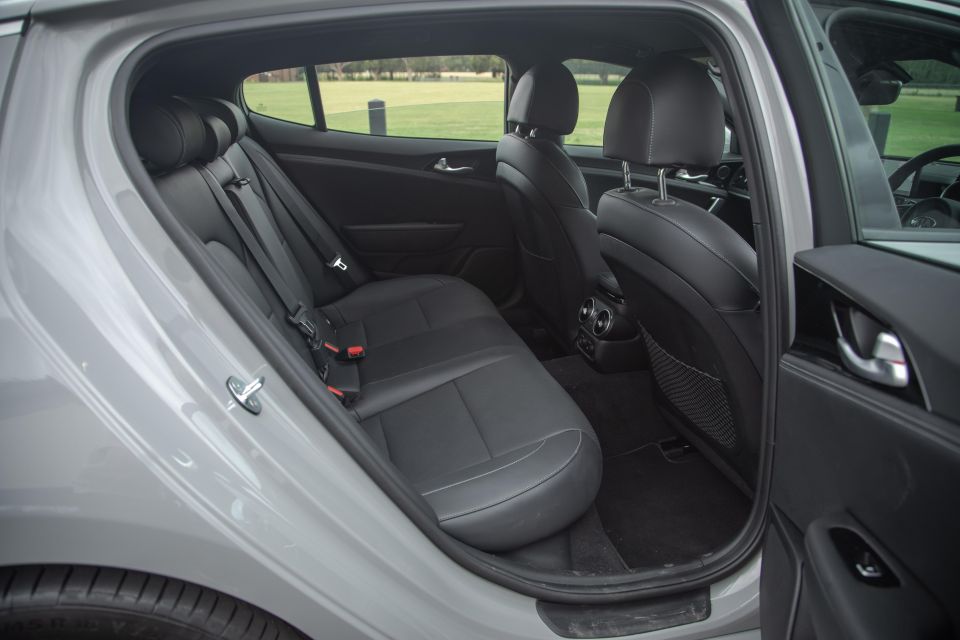

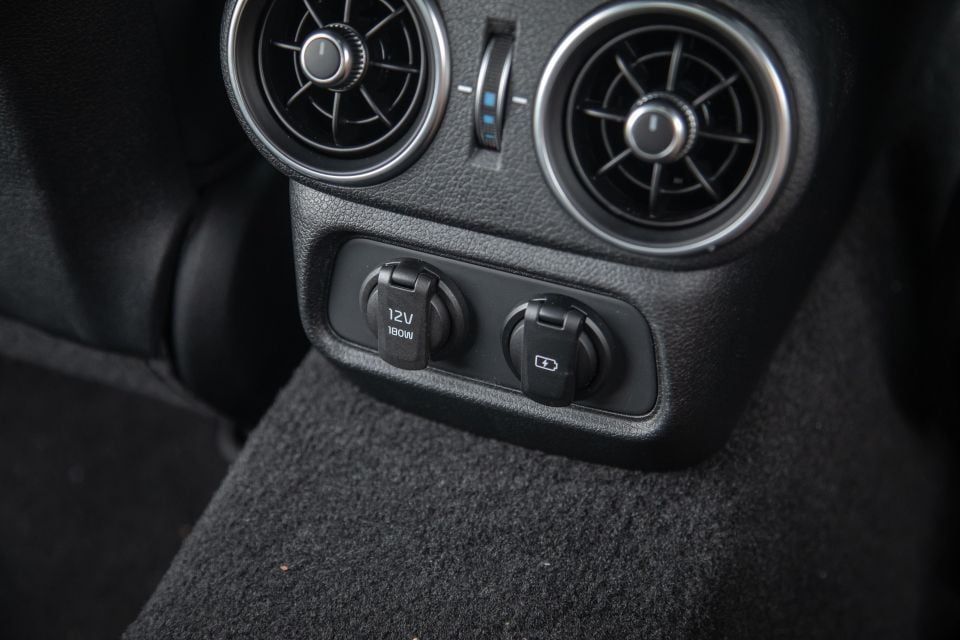
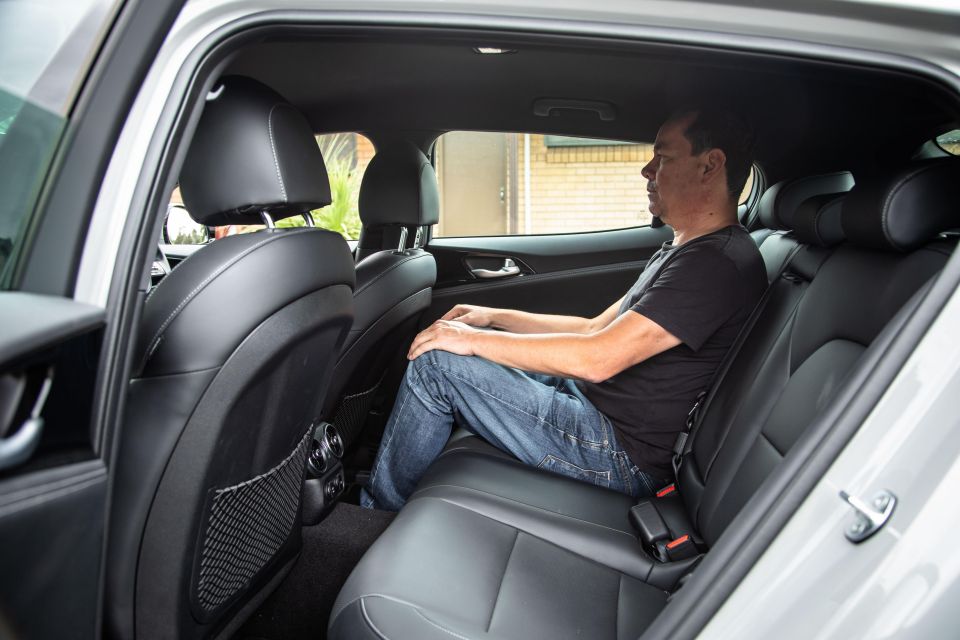
There’s a real maturity in look and solidity in the feel of the cabin, with decent material choice and little in the way of cost consciousness or absence of features betrayed by blank buttons. It’s awfully grey in theme and you can’t splash out on fetching red trim like you can in the GT-Line, but otherwise little about the 200S’s innards feel like you bought on a relative budget.
You do miss out on the blind-spot camera system of the GT-Line that projects a camera display of either side of the vehicle in the driver’s screen when turning left or right. Having used in the ‘wrong’ test car I can say that while it’s nifty tech you really don’t lose out much on its omission in 200S given it adds no content you can’t find in the good old-fashioned wing mirrors.
The infotainment system is very good and is becoming increasingly familiar to new buyers not just with Kia but with Hyundai, where a very similar format and design is being rolled out.
The sat-nav system is excellent, the split screen arrangement reasonably handy if you’re smartphone mirroring while using proprietary functions, and its interface is straightforward.
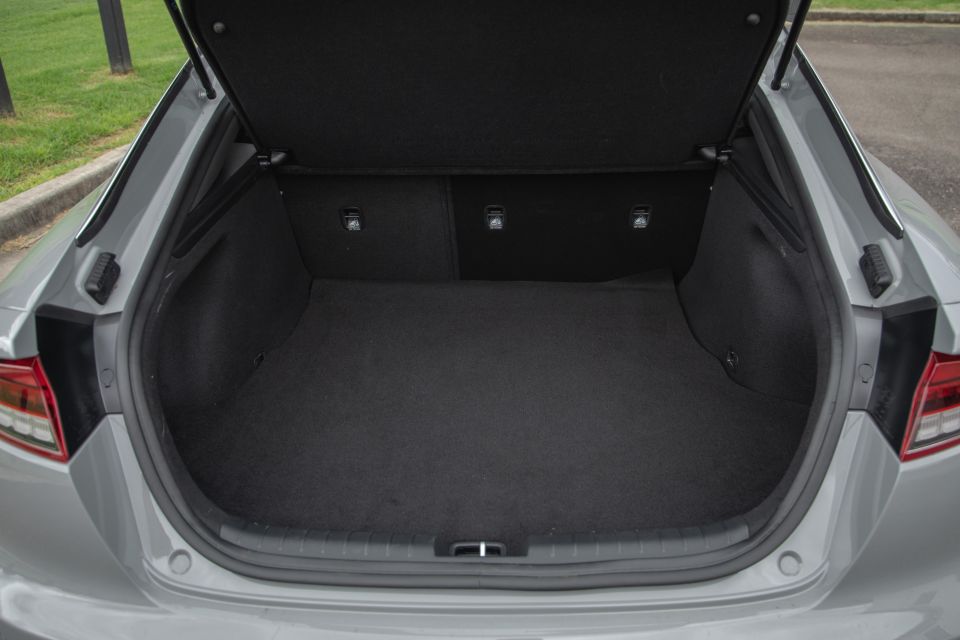
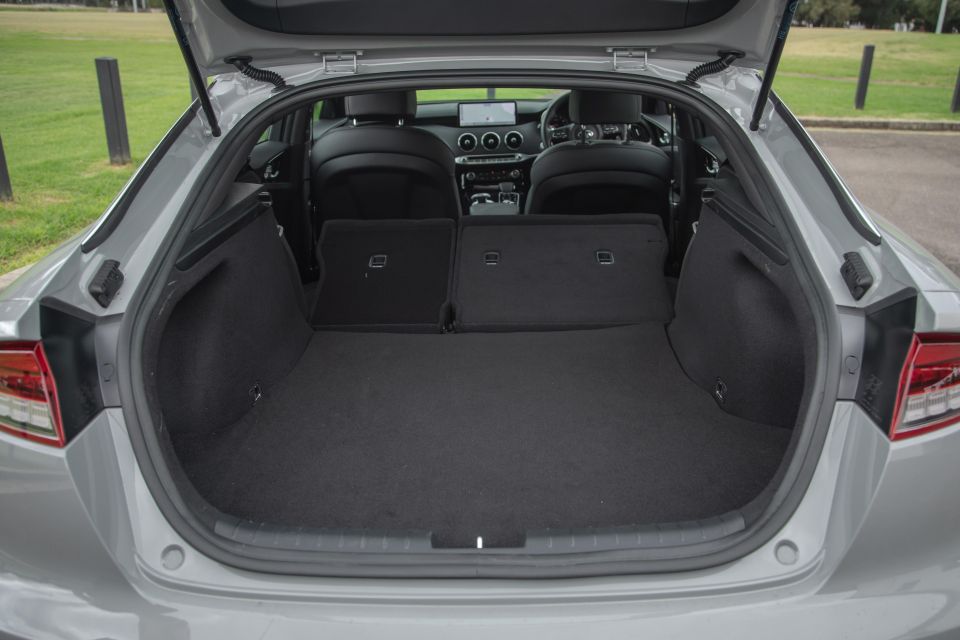
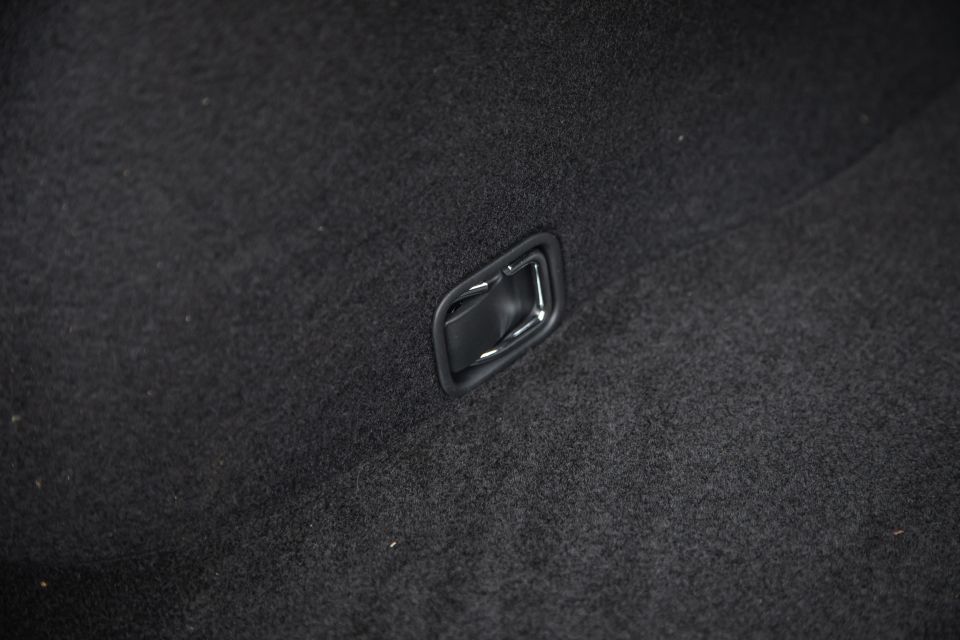
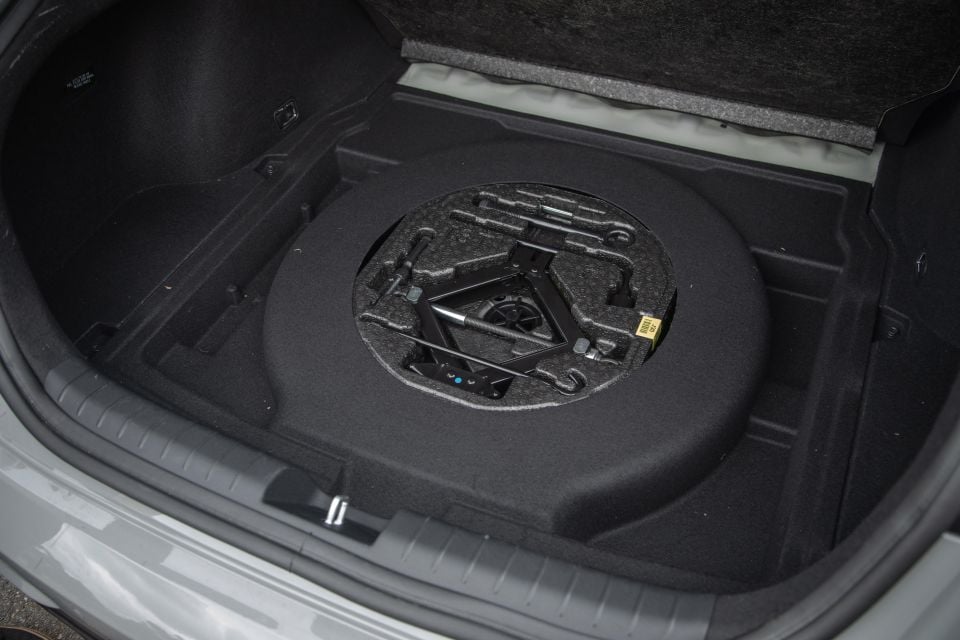
The sense of length is exacerbated in row two, where the Stinger’s extra wheelbase pays dividends compared with mid-sized alternatives.
Headroom is decent, though the upswept window line in the rear might obscure the view for smaller kids. But it’s fine accommodation, especially with the air vent/temperature/USB/12V array located in the rear of the centre console and handy drink holders in the centre armrest.
Elsewhere in the cabin, stowage varies between okay (door bins) to excellent (centre console bin).
The liftback format is very handy. Its 406 litres of boot space is more practical than it seems on paper, with lots of load depth and dimensions handy for very bulky payload. The 40:60 split-fold rear seatbacks liberate 1114L with the sort of load-through aperture regular sedans could only dream of.
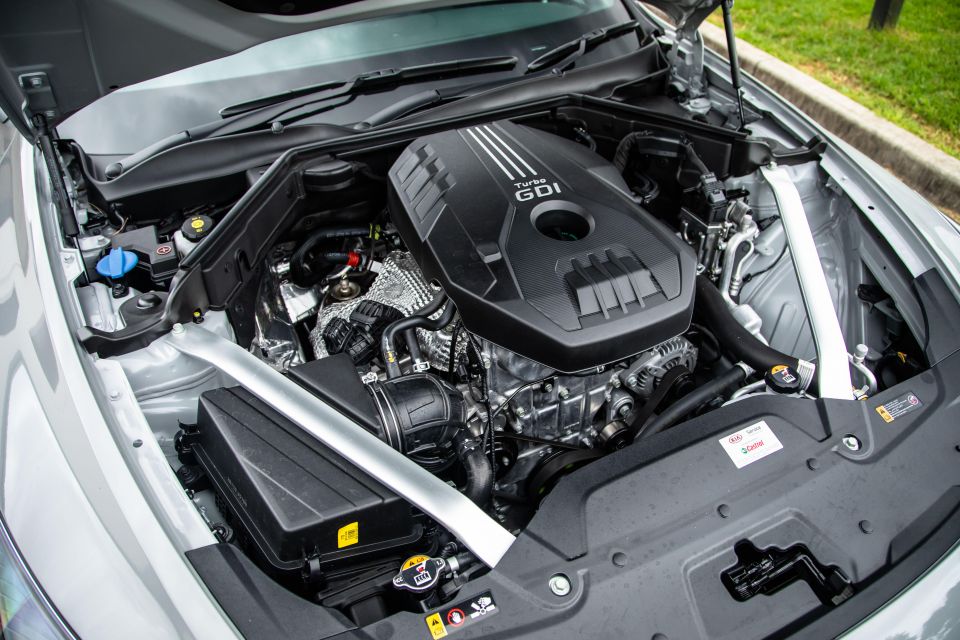
Australia misses out on the turbocharged 2.5-litre four introduced overseas as part of the facelift, with the local 2021 Stinger making do with the carryover 2.0-litre force-induced unit that produces 182kW at 6200rpm and 353Nm between 1400-4000rpm.
That’s 92kW and 157Nm short of the 3.3-litre twin-turbo V6 versions.
Like all Stingers, it has an eight-speed conventional automatic driving the rear wheels, but unlike other variants it omits a limited-slip differential.
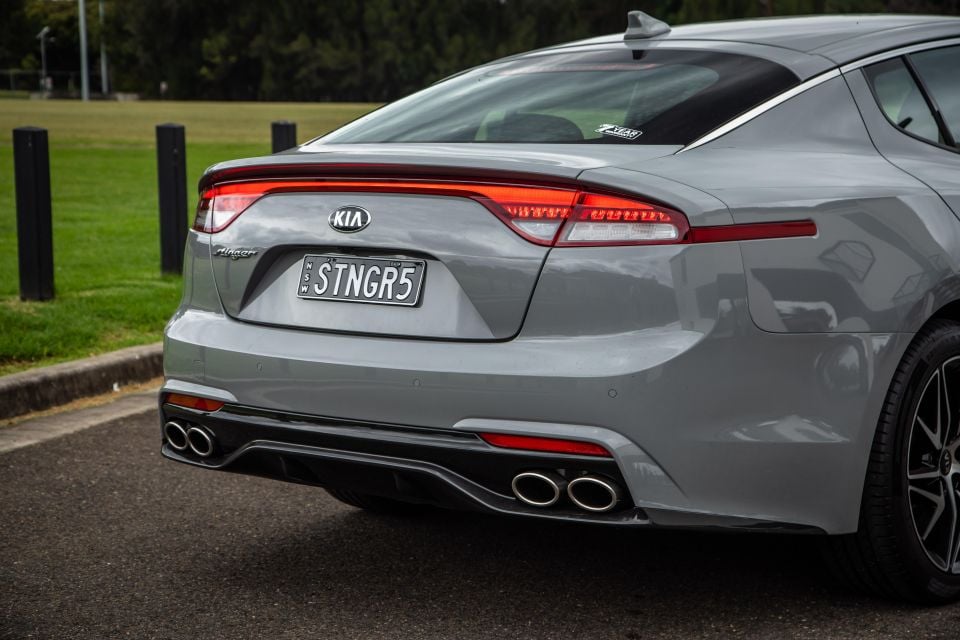
At 1720kg it’s no featherweight, though the 0-100km/h comes up in around 6.0 seconds, which is a touch over a second slower than the 3.3-litre versions.
No penalty in towing, though, with all Stingers advertised at 1500kg for braked towing (750kg unbraked), with the reversing camera offering a hitch-friendly overhead view.
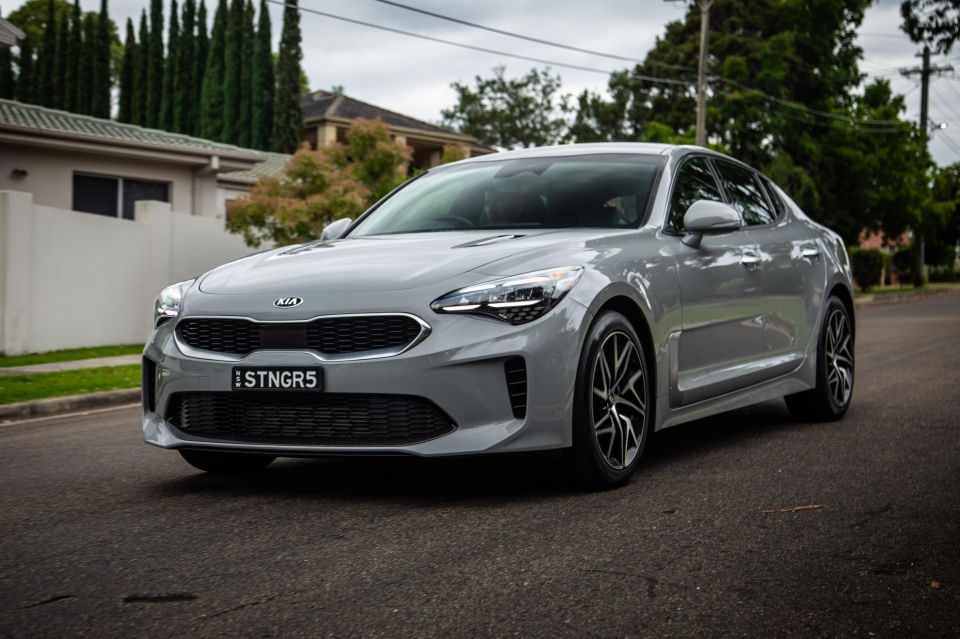
Where expert car reviews meet expert car buying – CarExpert gives you trusted advice, personalised service and real savings on your next new car.
It would be predictable to put the boot into the 2.0-litre Stinger for lacking chutzpah, but given the available V6 alternative is a small lease adjustment away it’s fair to presume accelerative and sonic glories aren’t high priorities in sizing up the 200S.
The glass-half-full perspective is the powertrain in the 200S gets is decent. There are four drive modes plus a user-assignable mode to fiddle with, but in tangibly similar Comfort or Smart modes the four-pot behaves as a healthy unit should: clean throttle response, assertive torque low enough in the rev range to afford drivability, and linear delivery of energy through an eight-speed auto offering smooth and intuitive shifting.
Sport lifts response and enthusiasm markedly and it feels brisk enough in an executive luxury sense.
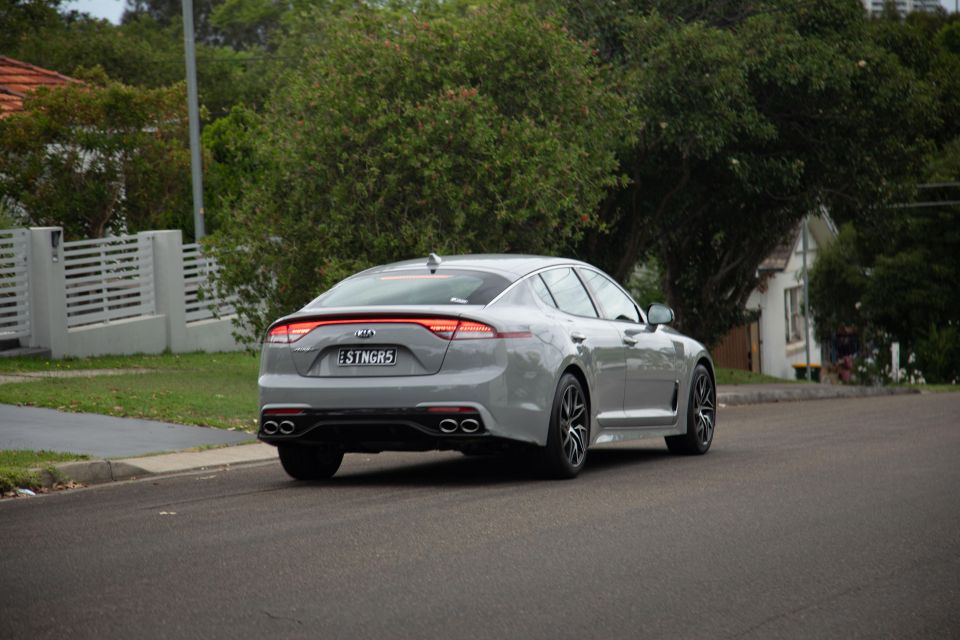
It’s certainly more clean in execution than some ‘budget premium’ small-capacity powertrains and offers a well-rounded polish most mid-sized SUVs would die for. Despite the lack of LSD and narrower rear rubber, it hooks up well and getting full traction isn’t an issue.
As we found with the GT-Line, the passive suspension errs to the firmer side, if not to the point of being fussy. You could put some extra compliance down to the 200S’s taller-sidewall 18-inch wheels over the higher-grade Stinger’s lower-profile 19s, though sampled back to back, the difference in ride quality is negligible.
It’s resolved enough to suit the Stinger’s luxury aspirations with no noteworthy gremlins bar a bit of tyre slap at the rear axle across speed humps.
Handling is a bit of a highlight. All those attributes we praised about the GT-Line ring true here, with its direct and even steering (that doesn’t lack for the absence of variable rack trickery), the flat cornering stance and keenness to change direction that belies its weigh-bridge ticket.

Out on the open road it’s quite the dignified cruiser and you could do much worse than the 200S as a grand tourer for a big country, aided no doubt that it happily runs on 91RON. Around town, the size of this thing demands a little extra care when judging space and parking, but the reversing camera and rear sensors are faithful allies.
The lane-keeping and lane-following functions, often indistinguishable from one another in practice, mean well but are assertive to the point of annoyance and are prone to misreading lane markings in the poorly-marked confines of urban Sydney.
Along narrow-laned major arteries such Victoria Road, you’re almost fighting the active steering in correction. Thankfully you turn both features off using the same wheel-mounted button.
After spending a week bouncing between the 200S and the GT-Line, I warmed to the Stinger’s on-road experience and found the 2.0T experience quite appealing though clearly my daily-driven right foot isn’t as lead-filled as some.
It only feels left a little wanting on the odd occasion when the red mist descends and even then, the turbo four isn’t left as short as many might presume.
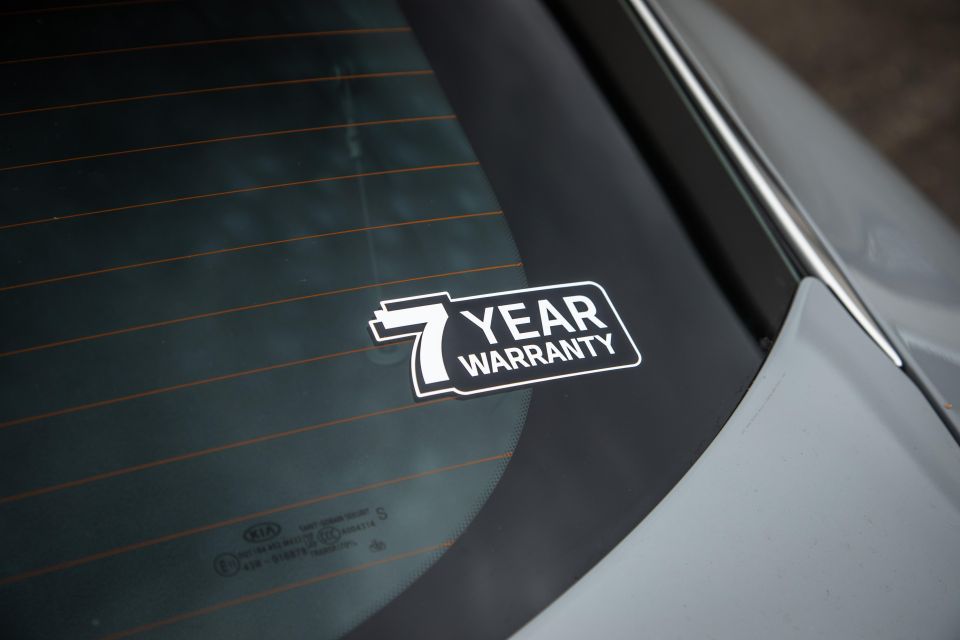
As we found with four-pot GT-Line, the 200S is advertised as having a combined fuel consumption of 8.8L/100kms but in the balance of mixed real-world driving tends to waver above and below the 10-litre mark.
It’s no fuel miser, though that’s the trade off for its respectable six-second performance potential. It’ll happily run on either cheap 91RON or E10 too.
Of course, the Stinger is covered by Kia’s commendable seven-year, unlimited-kilometre warranty and offers capped-priced servicing for a similar duration.
The first seven visits cost $312, $498, $399, $685, $351, $635 and $669, averaging out to $507 per year over the seven-year capped-price period. It does, however, require servicing every 10,000 kilometres (or 12 months, whichever comes first), rather than the common 15,000-kilometre intervals for some available powertrain types in motoring.
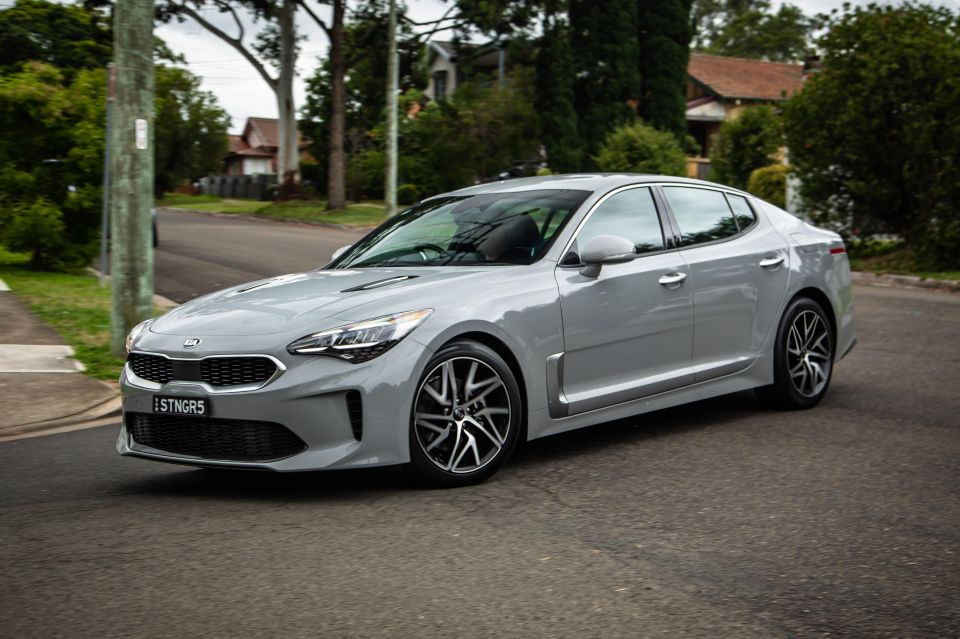
I never had much of a taste for the Kool-Aid when the Kia Stinger first lobbed a few years back and didn’t get as star-struck by the V6 version as many did. Nor do I believe removing two cylinders from an engine bay makes a decent car bad.
Park your prejudice at the door and it’s easy to come at the Stinger with the impression that it’s a lot of nicely executed, premium-tinged metal, glass and rubber for a friendly price. As luxury large car motoring on a budget, the 200S ticks a helluva lot of the right boxes.
The flip-side is the 2021 version asks for more money and with no new 2.5L turbo four to show there’s not much new outside of a larger infotainment screen and LED headlights. As decent as the current powertrain is, the lack of a meaningful upgrade and bigger kick up the backside means that the relatively modest premium ($3700 at drive-away pricing) for the V6-powered 330S is too strong a lure to ignore.
Whether you’re talking performance, expanded spec or resale, there are plenty of solid reasons why the six-cylinder versions have been markedly more popular with Stinger buyers to date.
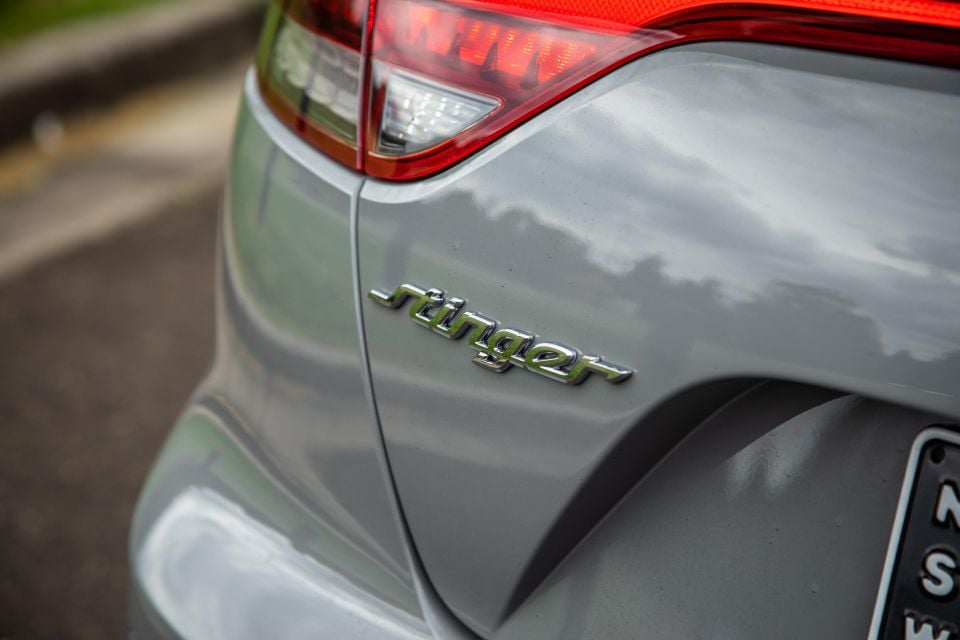
Click the images for the full gallery
Where expert car reviews meet expert car buying – CarExpert gives you trusted advice, personalised service and real savings on your next new car.


Paul Maric
7 Days Ago
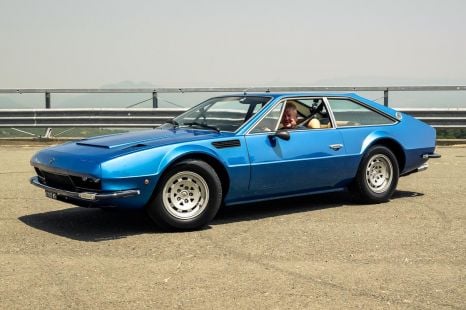

Anthony Crawford
6 Days Ago


Max Davies
5 Days Ago


James Wong
3 Days Ago


James Wong
3 Days Ago


Max Davies
2 Days Ago